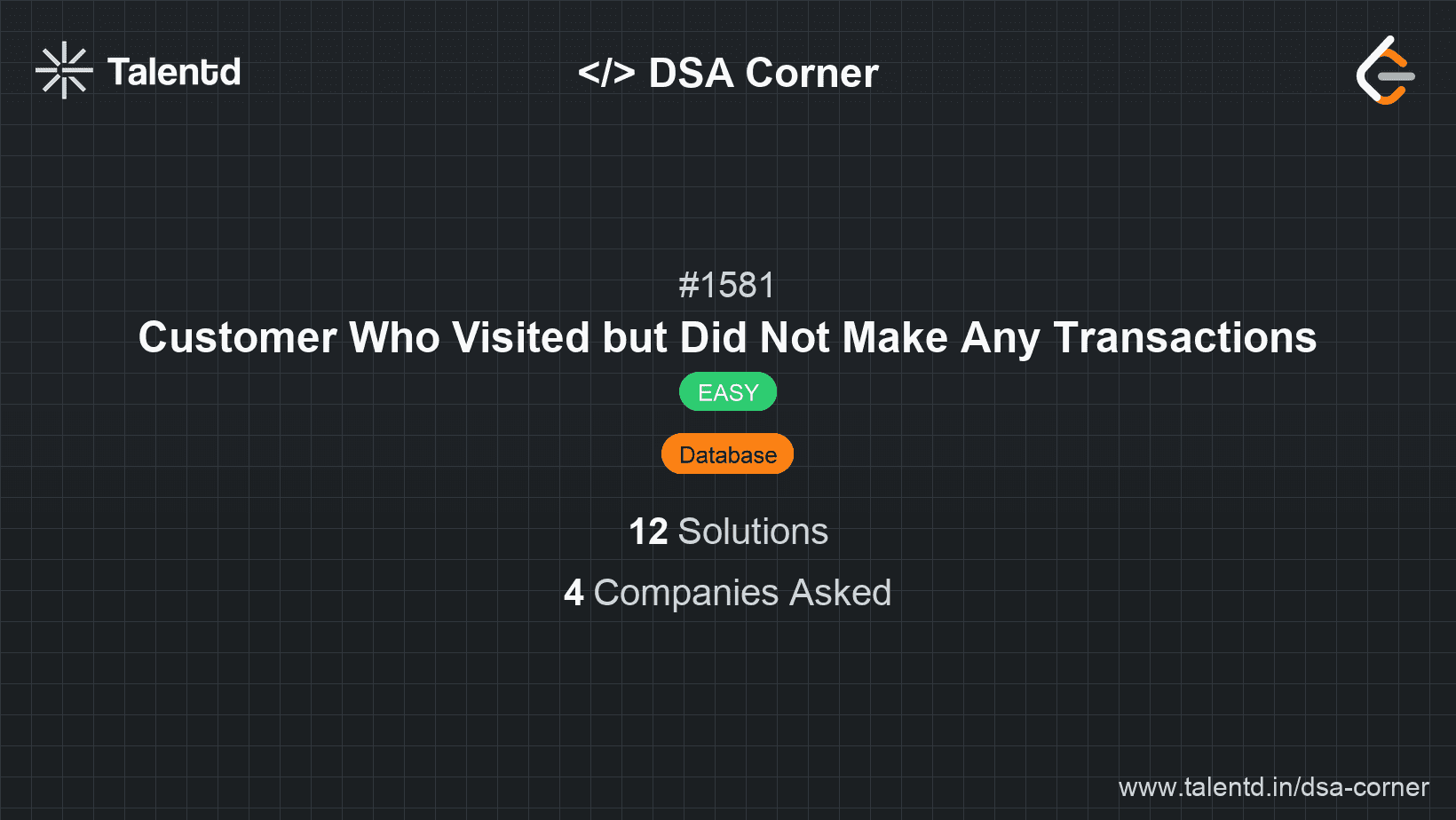
Sponsored
Sponsored
This approach utilizes SQL LEFT JOIN to find all visits that do not have corresponding transactions and GROUP BY to count the occurrences.
Time Complexity: O(N + M), where N is the number of rows in the Visits table and M is the number of rows in the Transactions table.
Space Complexity: O(K), where K is the number of unique customer_id entries in the result set.
1using System;
2using System.Data;
3using System.Data.SQLite;
4
5class Program
6{
7 static void Main()
8 {
9 string connectionString = "Data Source=your_database.db;Version=3;";
10 using (SQLiteConnection connection = new SQLiteConnection(connectionString))
11 {
12 connection.Open();
13
14 string query = "SELECT customer_id, COUNT(visit_id) AS count_no_trans FROM Visits LEFT JOIN Transactions ON Visits.visit_id = Transactions.visit_id WHERE Transactions.transaction_id IS NULL GROUP BY customer_id;";
15 using (SQLiteCommand command = new SQLiteCommand(query, connection))
16 {
17 using (SQLiteDataReader reader = command.ExecuteReader())
18 {
19 while (reader.Read())
20 {
21 Console.WriteLine($"customer_id: {reader["customer_id"]}, count_no_trans: {reader["count_no_trans"]}");
22 }
23 }
24 }
25 }
26 }
27}This C# solution uses ADO.NET and SQLite to perform SQL operations. It opens the database connection, executes a query to find unmatched visits, and then processes the results. The method applies a LEFT JOIN, filtering, and COUNT aggregation for implementation.
This approach uses a subquery with NOT EXISTS to find all visits by customers that do not appear in the Transactions table.
Time Complexity: O(N * M), where N is the number of rows in the Visits table and M is the number of rows in the Transactions table.
Space Complexity: O(K), where K is the number of unique customer_id entries in the result set.
using System.Data;
using System.Data.SQLite;
class Program
{
static void Main()
{
string connectionString = "Data Source=your_database.db;Version=3;";
using (SQLiteConnection connection = new SQLiteConnection(connectionString))
{
connection.Open();
string query = "SELECT customer_id, COUNT(visit_id) AS count_no_trans FROM Visits WHERE NOT EXISTS (SELECT 1 FROM Transactions WHERE Visits.visit_id = Transactions.visit_id) GROUP BY customer_id;";
using (SQLiteCommand command = new SQLiteCommand(query, connection))
{
using (SQLiteDataReader reader = command.ExecuteReader())
{
while (reader.Read())
{
Console.WriteLine($"customer_id: {reader["customer_id"]}, count_no_trans: {reader["count_no_trans"]}");
}
}
}
}
}
}This C# solution utilizes ADO.NET to connect to a SQLite database, execute a SQL query with a subquery for non-existent transactions, and process the results. The approach employs the relational database's query capability for accurate data retrieval.